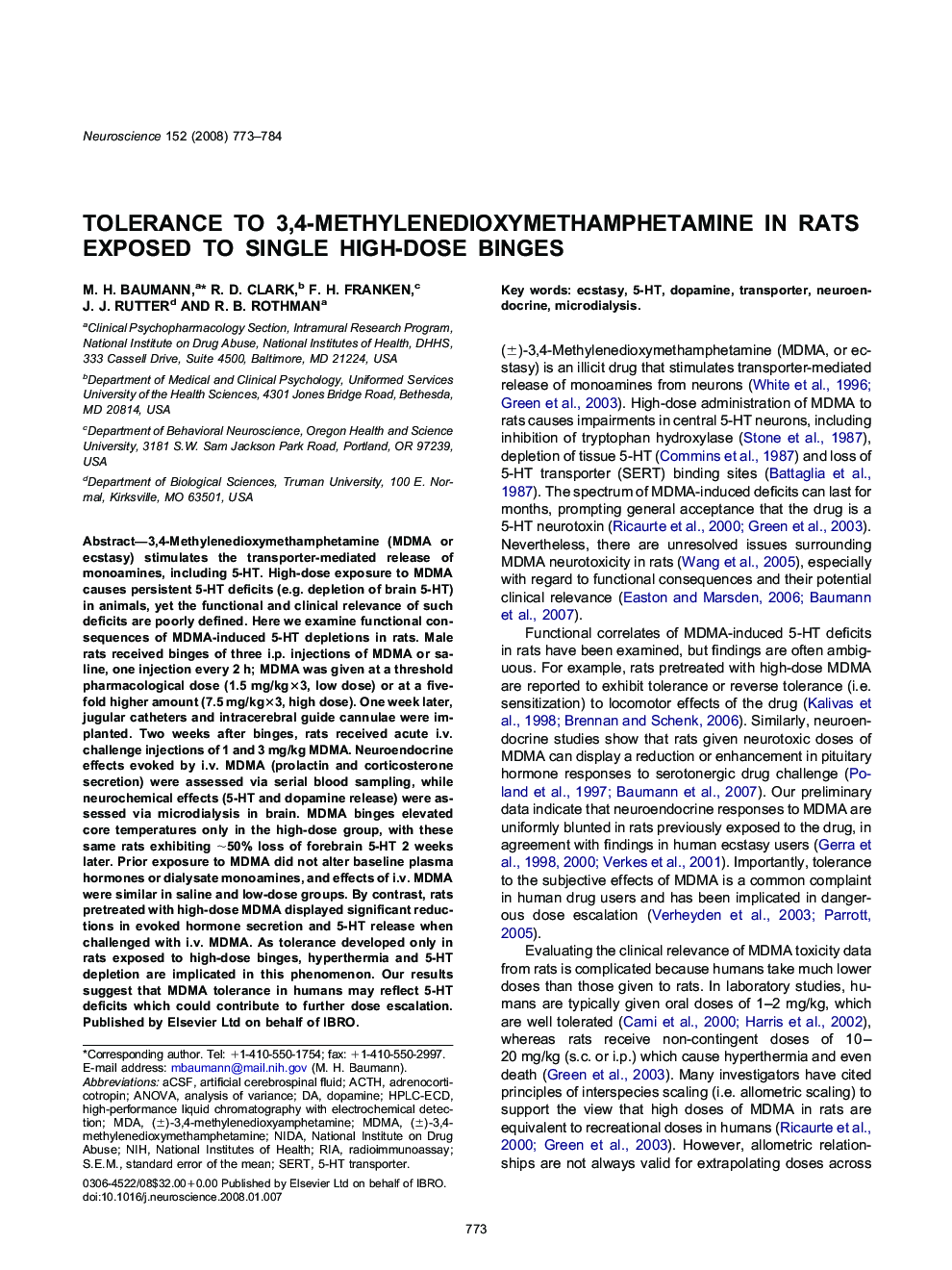| Article ID | Journal | Published Year | Pages | File Type |
|---|---|---|---|---|
| 4340905 | Neuroscience | 2008 | 12 Pages |
3,4-Methylenedioxymethamphetamine (MDMA or ecstasy) stimulates the transporter-mediated release of monoamines, including 5-HT. High-dose exposure to MDMA causes persistent 5-HT deficits (e.g. depletion of brain 5-HT) in animals, yet the functional and clinical relevance of such deficits are poorly defined. Here we examine functional consequences of MDMA-induced 5-HT depletions in rats. Male rats received binges of three i.p. injections of MDMA or saline, one injection every 2 h; MDMA was given at a threshold pharmacological dose (1.5 mg/kg×3, low dose) or at a fivefold higher amount (7.5 mg/kg×3, high dose). One week later, jugular catheters and intracerebral guide cannulae were implanted. Two weeks after binges, rats received acute i.v. challenge injections of 1 and 3 mg/kg MDMA. Neuroendocrine effects evoked by i.v. MDMA (prolactin and corticosterone secretion) were assessed via serial blood sampling, while neurochemical effects (5-HT and dopamine release) were assessed via microdialysis in brain. MDMA binges elevated core temperatures only in the high-dose group, with these same rats exhibiting ∼50% loss of forebrain 5-HT 2 weeks later. Prior exposure to MDMA did not alter baseline plasma hormones or dialysate monoamines, and effects of i.v. MDMA were similar in saline and low-dose groups. By contrast, rats pretreated with high-dose MDMA displayed significant reductions in evoked hormone secretion and 5-HT release when challenged with i.v. MDMA. As tolerance developed only in rats exposed to high-dose binges, hyperthermia and 5-HT depletion are implicated in this phenomenon. Our results suggest that MDMA tolerance in humans may reflect 5-HT deficits which could contribute to further dose escalation.
